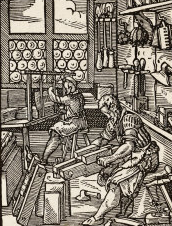Fulguration d'Ellsworth Kelly
Abstract
Ce que tente l’artiste américain Ellsworth Kelly (1923-2015) est une entreprise proprement prométhéenne : façonner comme son aîné Barnett Newman des blocs sans afféterie, des épiphanies lumineuses, précises, des œuvres qui frappent, qui foudroient, qui opposent à un expressionnisme abstrait déjà académique et à une figuration depuis longtemps devenue fade une nouvelle… fulguration. Pour Gottfried Boehm, Kelly a voulu créer, tout simplement, un nouvel art : “A new and totally original approach to the very concept of painting, to the whole idea of what art might be”.Quoique fabriquée en décalage avec l’art qui se produit aux Etats-Unis, l’œuvre d’Ellsworth Kelly partage avec le minimalisme et le Pop Art américain la volonté d’affirmer l’œuvre en tant qu’objet. Les œuvres que fabriquent Kelly et les Américains des années 60 délaissent souvent le cadre, mais ne sont pas moins travaillées par la nécessité de se constituer en « piège(s) à regard ». Au contraire, elles portent très haut l’auto-signalement, faisant de ce que l’on pourrait appeler la fonction signalétique une question essentielle. De cette hypertrophie signalétique provient un grand pouvoir de captation, une nouvelle capacité à subjuguer, de sorte que l’on pourrait avancer que leur recherche de visibilité relève pour partie d’une stratégie de séduction.
Published
2017-02-09
Issue
Section
ARTICLES
License
- Work submitted for publication must be original, previously unpublished, and not under consideration for publication elsewhere. If previously published figures, tables, or parts of text are to be included, the copyright-holder's permission must have been obtained prior to submission.
- Authors of accepted manuscripts will assign to L'Atelier the right to electronically distribute their article, or publish it in any form (Internet, CD ROM, printed copy) but authors will retain copyright and, after the article has appeared in L'Atelier, authors may republish their text (in print and/or electronic form) as long as they clearly acknowledge L'Atelier as the original publisher.


